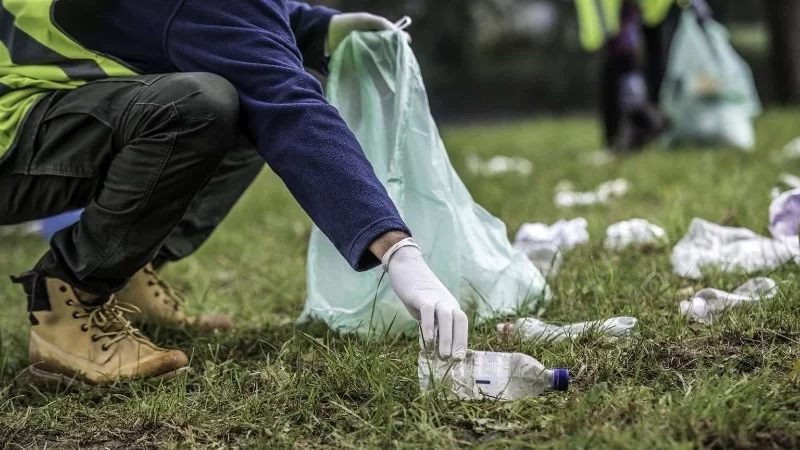- why-responsible-human-waste-disposal-matters-in-the-outdoors
- core-principles-of-leave-no-trace-for-human-waste
- methods-for-properly-disposing-human-waste-in-different-environments
- real-case-when-irresponsible-waste-led-to-trail-closure
- common-mistakes-to-avoid-when-managing-human-waste
- how-pine-cliff-resort-supports-sustainable-outdoor-practices
1. Why Responsible Human Waste Disposal Matters in the Outdoors
When you're miles from modern plumbing, it's easy to assume that nature will "take care of it." But when thousands of hikers, campers, and adventurers make that same assumption, the result is contamination of water sources, damaged ecosystems, and even the closure of beloved trails. The principle of Leave No Trace for human waste isn't just polite — it’s essential for preserving the land we love.
Untreated human waste contains pathogens that can leach into water supplies, spread diseases, and harm wildlife. The smell alone can ruin the wilderness experience for the next hiker. That’s why understanding and following proper outdoor sanitation practices is not optional — it’s a responsibility every outdoor enthusiast shares.
2. Core Principles of Leave No Trace for Human Waste
2.1 Plan Ahead and Prepare
Before you head into the wild, research the waste disposal requirements of your destination. Some areas require you to pack it all out using WAG bags or portable toilets, while others may permit catholes. Always bring the right tools — trowels, biodegradable toilet paper, and sealable waste bags should be in every backcountry pack.
2.2 Dispose of Waste Properly
When catholes are permitted, dig a hole 6–8 inches deep and at least 200 feet away from water, trails, and campsites. Cover and disguise the hole after use. In fragile alpine or desert environments, packing out all waste is the only ethical option. Never bury or burn toilet paper unless guidelines specifically allow it — carry it out in a sealable bag.
2.3 Minimize Impact with Smart Choices
Use designated latrines when available. Avoid relieving yourself on mossy or sandy areas where waste degrades more slowly. In winter, consider the snowpack's runoff patterns — what you leave behind may resurface in spring meltwater, contaminating large areas.
3. Methods for Properly Disposing Human Waste in Different Environments
3.1 Forest and Temperate Areas
In heavily wooded areas, catholes are usually effective and sustainable. Use natural materials to disguise the site. Avoid areas with high foot traffic or wildlife nesting.
3.2 Desert and Arid Zones
Due to low moisture, decomposition is slow in deserts. Always pack out waste using human waste disposal bags. Leaving it behind, even if buried, can cause long-lasting damage.
3.3 Alpine and Tundra Landscapes
Cold climates slow decomposition dramatically. In these zones, all waste should be packed out. Lightweight, odor-sealing bags are now standard equipment for responsible hikers.
3.4 River Corridors and Wetlands
If paddling, use portable toilet systems. Some rivers require permits that include specific sanitation requirements. Never dump waste into water or along the shoreline.
4. Real Case: When Irresponsible Waste Led to Trail Closure
In 2022, a popular section of the Pacific Crest Trail near Mount Shasta was temporarily closed due to overwhelming waste buildup. Hikers disregarded Leave No Trace guidelines, leading to visible feces and contaminated streams. Volunteer groups attempted cleanup, but the damage was significant.
The closure prompted an online campaign educating hikers about ethical waste management. It was a hard lesson: even small acts of neglect can lead to major access loss. The takeaway? It’s everyone’s job to protect our trails.
5. Common Mistakes to Avoid When Managing Human Waste
5.1 “It’s Just One Time” Thinking
One person’s carelessness may not seem harmful — until you realize you’re the hundredth person thinking that way. The cumulative effect is massive, especially in popular backcountry areas.
5.2 Poor Cathole Technique
Too shallow. Too close to water. No disguise. These are frequent errors that result in exposure and contamination. Take the time to do it right — or pack it out.
5.3 Leaving Toilet Paper Behind
Even “biodegradable” toilet paper takes weeks to decompose. Animals may dig it up, and rain can wash it into creeks. Always carry it out in a sealed bag.
6. How Pine Cliff Resort Supports Sustainable Outdoor Practices
At Pine Cliff Resort, sustainability isn’t just a buzzword — it’s a way of life. We provide campers and backpackers with eco-friendly sanitation kits, including compostable waste bags and Leave No Trace education guides. Our team regularly hosts workshops on outdoor ethics to ensure that every guest leaves the wilderness better than they found it.
Whether you're planning a weekend camping trip or an extended backcountry journey, our expert staff will help you choose the right gear for responsible waste management. Nature doesn’t clean up after us — but we can ensure that it doesn’t have to.







